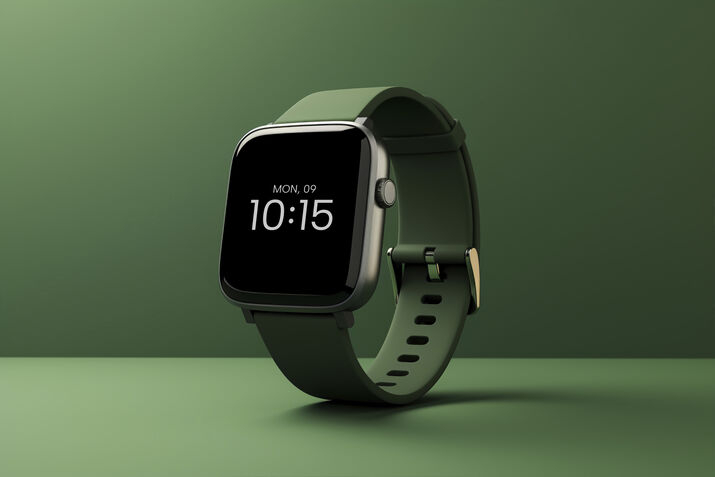Wearable tech 2025 will become a category of essential devices that meet the minimum requirements for everyday life. Their applications will span across health, productivity, style, and augmented reality, with devices like smartwatches, rings, AR glasses, and biometric clothing becoming fully integrated into daily routines. In this guide, we will explore the key driving factors behind this growing trend in wearable tech 2025: the devices that Americans are already using, the latest technological innovations, the challenges the industry faces, and how to choose the right wearable device to match your lifestyle.
Wearable Tech 2025: The New Normal
To begin with, the growth of the Wearable tech 2025 industry is driven by a combination of different factors:
- Increasing health and wellness awareness: More and more Americans are focusing on preventive care. Wearables offer not only step counts but also stress, oxygen saturation, sleep quality, and early warning signals.
- AI and better analytics: The machines are no longer just Passive trackers. They act like humans, analyzing and giving insights, and even adapting to your habits.
- Improved sensors: In 2025, more wearables will be able to measure blood pressure, glucose, and hydration non-invasively.
- Integration: The wearables are becoming parts of the larger ecosystem, like the smart homes, automotive, and health care platforms.
Design: A decade ago, Americans were willing to compromise a little on the aesthetics for functionality. Today, the opposite is true; people expect a device to be slim, light, and comfortable to wear. Battery life, the shape of the device, and how it looks matter more than ever.
The above-mentioned trends have made wearable technology 2025 not only for fitness enthusiasts but also for the rest of the people, including office workers, students, elders, and casual users.
Most Relevant Wearables U. S. Consumers Should Expect
In 2025, as the market continues to evolve, here are the key categories and devices that will shape the U.S. wearable landscape:
- Smartwatches & Health Bands
Smartwatches continue to be the most popular category. In 2025, they do not just give a step count- they also provide ECG monitoring, SpO₂ measurement, sleep stages, recovery, and even issue health alerts.
The leading companies: Notably, Apple, Samsung, Garmin, and Fitbit are at the forefront of these developments, consistently delivering improved battery performance, tighter integration, and advanced AI features.
- Smart Rings
Meanwhile, smart rings are rapidly gaining popularity as small, discreet wearables. Not only can they monitor heart rate, sleep, and readiness, but in some cases, they also offer advanced features like blood pressure or glucose tracking.
- Smart Glasses & AR Wearables
AR glasses and smart eyewear are becoming not only more usable but also more stylish. By 2025, they will be able to provide overlays, notifications, navigation, and camera features in an unobtrusive way.
- Smart Clothing & Biometric Apparel
In addition, embedded clothing is becoming increasingly popular—featuring shirts, socks, or leggings that track muscle movement, posture, hydration, and more.
- Earables / Audio Wearables
Additionally, devices that sit in or around the ear, such as smart earbuds, are rapidly maturing into health- and context-aware wearables. These gadgets not only monitor heart rate and respiration but also provide helpful ambient cues.
What’s New & Trendy in 2025
Let us delve into the innovations that are driving the new tech trend:
- Non-invasive biometrics: Meanwhile, ongoing research in laboratories is advancing the use of wearable sensors—utilizing optical, plasmonic, and sweat-based techniques—to monitor glucose and hydration levels without the need for injections.
- Predictive health & anomaly detection: Devices are spotting anomalies even before the symptoms become apparent, which is changing the perception of wearables from mere monitors to early intervention tools.
- Energy harvesting & battery technology: In parallel, solar, kinetic, and body-heat charging technologies are driving efforts to extend device uptime and minimize reliance on frequent charging.
- Ethical, regulatory health wearables: The distinction between wellness wearables and medical devices has become quite blurry. The situation regarding regulatory clarity is unpredictable, especially in the U. S. where the FDA has gotten involved.
- Seamless ecosystem integration: Looking ahead, wearables are expected to achieve even deeper synchronization with smartphones, AI assistants, smart homes, vehicles, and personal health records.

Use Cases: Who Benefits Most from Wearable Tech 2025?
Importantly, the year 2025 will not be one-size-fits-all for wearables. Instead, here is how different users across the U.S. will be taking full advantage of these devices:
- For example, students will be able to use smart glasses to take notes, view AR overlays, and engage in interactive learning experiences.
- Similarly, professionals might rely on smart rings or watches to monitor trends in their energy levels, stress, and overall productivity throughout the day.
- Likewise, seniors or older adults will benefit from health-monitoring wearables that can send real-time alerts to caregivers, enhancing safety and peace of mind.
- Moreover, fitness buffs will be able to rely on their devices for advanced tracking, recovery analytics, and personalized coaching to optimize performance.
- Since the adoption of Wearable tech 2025 is not limited to any demographic group, it is steadily spreading across the whole country.
Challenges & Considerations
Even though wearable technology is very exciting, 2025 will bring major challenges:
- Privacy and data security: As a result, sensitive health data must be protected. Users increasingly demand strong encryption, greater control over data sharing, and clear regulatory safeguards.
- Regulation and medical claims: As the lines continue to blur, it’s becoming increasingly difficult to distinguish between wellness and medical devices. Consequently, misleading claims may attract regulatory scrutiny.
- Battery and durability: Despite ongoing improvements, battery life for AR or smart glass wearables still remains a significant bottleneck.
- User adoption & comfort: The devices must be dependable, comfortable, and visually pleasing.
- Cost & accessibility: Cutting-edge wearables usually come with a premium price tag—this widens the gap between the tech-savvy and others.
How to Pick the Right Wearable Tech 2025
If you are considering wearable tech 2025 for your personal use, here are some tips:
- Use case: Health, productivity, fitness, style, or something else?
- Sensor & accuracy claims: Look for independent validation or FDA approval for sophisticated metrics.
- Battery/charging solution: Longer battery life or creative charging is a big plus.
- Ecosystem & compatibility: Is it compatible with your phone, apps, and other devices?
- Design & comfort: You should love to wear it every day.
- Data privacy policies: Familiarize yourself with how and for what purposes your data will be stored, shared, and used.
Conclusion: The Future Is on Your Wrist (And Beyond)
To sum up, wearable tech 2025 is becoming smarter, more networked, and more essential over time. It is not just about step counting anymore; it is about preventive health, productivity, smart fashion, and augmented-reality experiences all at once. The United States is in a good position to take the lead in adoption due to its technological infrastructure, sports culture, and health consciousness.
Moreover, if you keep yourself updated, carefully select the appropriate device, and remain mindful of data privacy, you will confidently be able to join the wearable revolution as it continues to develop.
